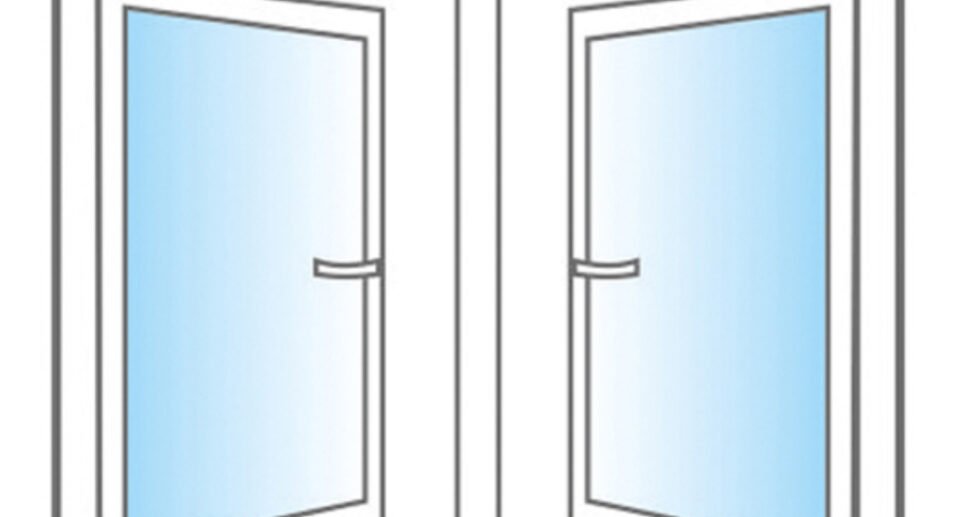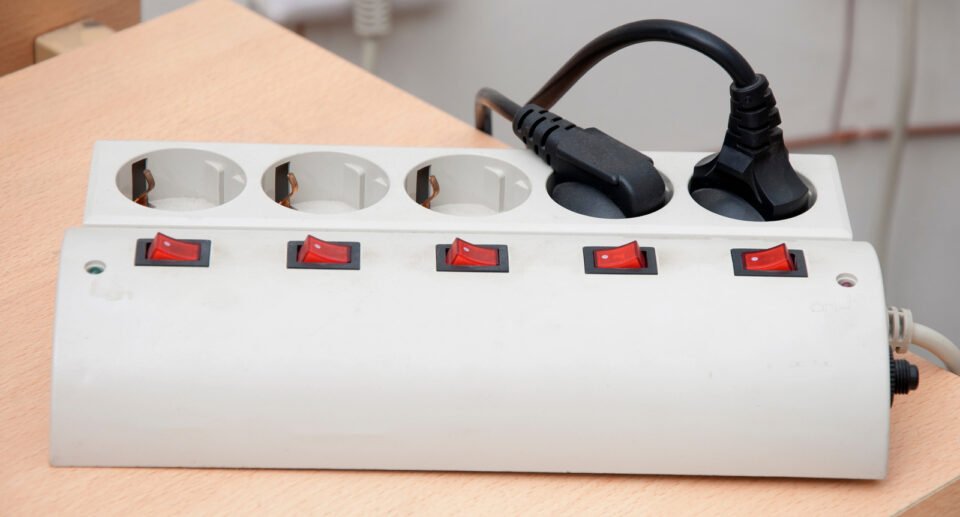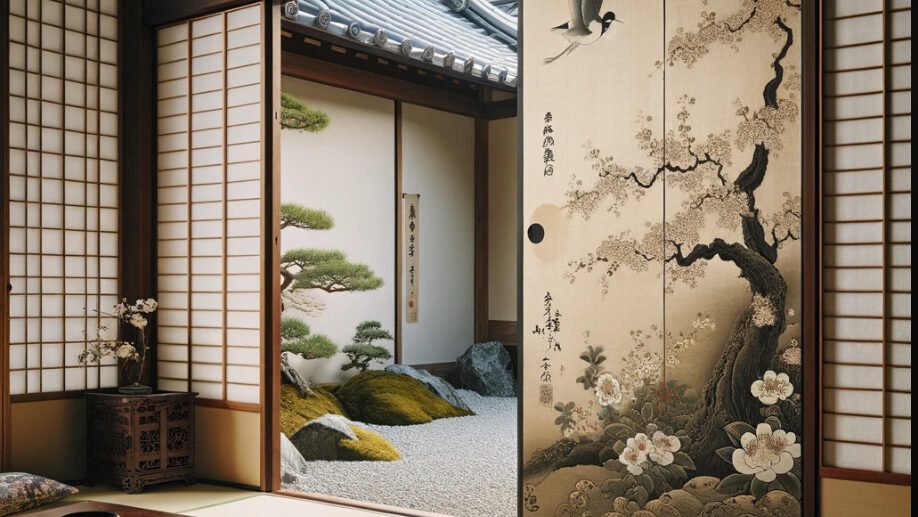Double Casement Windows: A Guide to Benefits & Installation

Table of Contents
ToggleDouble casement windows are a type of window that is hinged on the side and opens outward from the center, allowing for maximum ventilation and a clear view of the outside. Unlike single casement windows, which have only one sash that opens, double casement windows feature two sashes that operate independently of each other.
This means that you can open one side of the window while keeping the other closed, providing greater flexibility and control over your indoor environment.
One of the key benefits of double casement windows is their ability to provide excellent ventilation. Because they open outward, they allow fresh air to flow freely into your home, helping to improve indoor air quality and reduce the need for air conditioning.
Additionally, double casement windows are often more energy-efficient than other types of windows, thanks to their tight seals and multiple locking points. This can help to reduce your energy bills and make your home more comfortable year-round.
When it comes to design and aesthetics, double casement windows offer a classic, timeless look that can complement a wide range of architectural styles.
They are available in a variety of materials, including wood, vinyl, and fiberglass, and can be customized with different colors, finishes, and hardware options to suit your personal style.
Whether you’re looking to enhance the curb appeal of your home or simply improve its functionality, double casement windows are a versatile and practical choice.
Key Takeaways
- Double casement windows provide excellent ventilation and energy efficiency.
- They offer a classic, timeless look that can complement a wide range of architectural styles.
- Double casement windows are available in a variety of materials and can be customized with different colors, finishes, and hardware options.
Understanding Casement Windows
Casement windows are a popular type of window that swings open like a door. They are hinged on one side and are operated using a crank or lever.
Casement windows can be found in a variety of styles, materials, and sizes to fit any home’s design and architecture.
Types of Casement Windows
There are several types of casement windows, including French casement windows, push-out casement windows, in-swing casement windows, and single casement windows.
French casement windows are hinged on the sides and open in the middle, while push-out casement windows are hinged on the bottom and open outwards.
In-swing casement windows are hinged on the side and open inward, and single casement windows are hinged on one side and open outward.
Components and Mechanisms
Casement windows consist of several components, including the sash, frame, hinges, and crank mechanism. The sash is the movable part of the window that holds the glass and is attached to the frame by hinges.
The frame is the stationary part of the window that holds the sash and is attached to the wall. The hinges are the mechanisms that allow the sash to swing open and closed, and the crank is the mechanism that operates the window.
Casement windows are a great choice for homeowners who want a window that provides excellent ventilation and energy efficiency. They are easy to operate and maintain, and they come in a variety of styles and materials to fit any home’s design and architecture.
Design and Aesthetics of Double Casement Windows

When it comes to selecting the perfect windows for your home, the design and aesthetics of the windows play a crucial role. Double casement windows offer a unique and modern design that can elevate the aesthetic of any home.
Material and Finish Options
Double casement windows are available in a variety of materials, including vinyl exterior, factory-finished wood interiors, and more. The material you choose can impact the overall aesthetic of your windows.
Additionally, you can choose from a range of finishes, including white, dark bronze, and black interiors.
Color and Style Variations
The color and style of your double casement windows can significantly impact the overall aesthetic of your home. Double casement windows offer a range of color options to choose from, including white, black, and dark bronze.
These colors can complement the color scheme of your home’s exterior. Additionally, double casement windows are available in a range of styles, including contemporary, traditional, and architectural authentic styles.
Double casement windows can provide ample natural light and unobstructed views, making them an excellent choice for homeowners who want to maximize the amount of natural light in their homes. The shape of double casement windows can also impact the overall aesthetic of your home.
Functionality and Performance of Double Casement Windows
Ventilation and Airflow
Double casement windows are an excellent choice for homeowners looking to improve ventilation and airflow inside their homes. These windows are designed to open outward, providing a wide opening that allows fresh air to circulate throughout the room.
This feature makes double casement windows ideal for use in areas of the home where good ventilation is essential, such as the kitchen or bathroom.
Energy Efficiency and Insulation
Double casement windows are known for their energy efficiency and insulation properties. They are designed to provide an airtight seal, preventing drafts and heat loss.
This feature helps to keep the home comfortable year-round while reducing energy costs.
To further enhance the energy efficiency of double casement windows, homeowners can opt for models with triple-pane glass. This type of glass provides superior insulation, helping to keep the home warm in winter and cool in summer.
Installation and Maintenance Process of Double Casement Windows
Installation Process
Installing double casement windows can be a straightforward process, but it is important to follow the manufacturer’s instructions carefully to ensure a proper fit and seal.
The first step is to remove the old window and prepare the opening for the new window. This may involve trimming the opening or adding insulation to improve energy efficiency.
Next, the new window is placed in the opening and secured using screws or nails. The nailing flange should be flush with the wall to ensure a tight seal.
Finally, any necessary hardware is installed, such as locks, handles, or cranks.
It is recommended to hire a certified contractor for full-service replacement casement window installation, especially if the project involves more than one window or if there are any concerns about water damage or other issues.
Maintenance and Upkeep
Double casement windows made from composite materials, such as Renewal by Andersen, are generally maintenance-free and do not require painting or staining.
Pine windows, on the other hand, may require regular upkeep to prevent water damage and rot.
To maintain double casement windows, it is important to keep them clean and free of debris. This can be done by wiping them down with a soft cloth and mild soap solution.
Hardware should also be lubricated periodically to ensure smooth operation.
If any damage or wear and tear is noticed, it is important to address it promptly to prevent further damage. Online parts stores may offer replacement hardware or other parts to make repairs.
Advantages and Considerations
Pros and Cons
Double casement windows have several advantages and considerations to keep in mind when deciding if they are the right choice for a home.
One of the main advantages of double casement windows is their flexibility. These windows can be opened fully or partially, allowing for optimal ventilation and air flow.
They can also be hinged on either side, making them easy to clean and maintain. Additionally, double casement windows can come with screens that are easy to remove and clean.
Another advantage of double casement windows is their mullion, or the vertical bar that separates the two window panes. This mullion provides additional structural support, making the window more durable and less prone to damage from strong winds or storms.
However, there are also some considerations to keep in mind when choosing double casement windows. One potential drawback is their size.
Double casement windows can be larger and heavier than other window types, which can make them more difficult to install. Additionally, they may not be as energy efficient as other window types, as the mullion can create a small gap in the window seal.
Comparisons with Other Window Types
When comparing double casement windows to other window types, there are several factors to consider.
Compared to double-hung windows, double casement windows offer better ventilation and air flow. They can also be easier to clean, as they can be opened fully and hinged on either side.
However, double-hung windows may be a better choice for homes with limited exterior clearance, as they do not require as much space outside the window for opening.
Compared to single-hung windows, double casement windows offer better ventilation and air flow, as both window panes can be opened fully. They also offer more flexibility in terms of cleaning and maintenance.
However, single-hung windows may be a more cost-effective option for homeowners on a budget.
Compared to replacement insert windows, double casement windows offer better structural support and durability, thanks to the mullion. They also offer more flexibility in terms of ventilation and air flow.
However, replacement insert windows may be a more cost-effective option for homeowners looking to replace existing windows without changing the window frame.
Customization and Accessories
Double casement windows offer extensive customization options to fit any architectural design. From traditional wood frames that add a classic charm to modern aluminum or vinyl frames for a contemporary look, there’s a material to match every aesthetic.
When it comes to hardware and accessories, double casement windows offer great flexibility.
The handle and push-out options make it easy to open and close the window, and the hinged sides allow for maximum ventilation.
For those looking for a more natural look, wood species can be chosen to match the interior of the house. The wood can be stained or painted to match the color scheme of the room.
To add a touch of elegance, painted wood interior can be chosen to give the window a clean and polished look.
It is important to note that genuine Andersen parts are recommended for the best performance. The company offers a wide range of accessories to enhance the functionality and aesthetics of the window.
Visual and Spatial Impact
Double casement windows are an excellent choice for homeowners who want to enhance the aesthetics of their homes. These windows provide a sleek and modern look that can make any home feel more spacious and inviting.
They are also an excellent way to bring more natural light into a home, which can help to create a warm and inviting atmosphere.
Enhancing Home Aesthetics
Double casement windows have the ability to enhance the charm and appeal of a home. These windows can be designed to match the style of any home, from traditional to modern. They can also be customized with muntins or grids to create a unique look that complements the overall design of the home.
Double casement windows are also an excellent way to create a wall opening that provides a panoramic view of the surrounding landscape. This can be especially beneficial for homes that are located in areas with beautiful scenery, such as mountains or forests.
Frequently Asked Questions
Double casement windows usually have two sashes that open outwards with a crank mechanism. The crank is located at the bottom of the frame and can be turned to open and close the window.
To open the window, simply turn the crank handle in a clockwise direction. To close the window, turn the crank handle in a counterclockwise direction.
Double casement windows come in a range of sizes, but the most common sizes are 30 x 36 inches and 36 x 42 inches. However, you can always request a custom size that fits your specific needs.
The material used for double casement windows can affect their durability, energy efficiency, and maintenance requirements. Some popular materials for double casement windows include wood, vinyl, and fiberglass.
When choosing the material, consider factors such as the climate, the style of your home, and your budget.
French casement windows are similar to double casement windows, but they have no center mullion. This means that they offer an unobstructed view when both sashes are open. In contrast, double casement windows have a center mullion, which can obstruct the view when both sashes are open.
The cost of double casement windows can vary depending on factors such as the size, the material, the glass type, and the installation method.
Custom sizes and high-end materials can increase the cost of double casement windows. Additionally, if you opt for professional installation, the cost will be higher than if you install the windows yourself.
The most common parts that may need replacement in double casement windows are the crank handles, hinges, and weatherstripping. Over time, these parts can wear out or break, which can affect the functionality of the window.
If you notice any issues with your double casement windows, it’s important to address them promptly to prevent further damage.

Hello, I’m Keith Jones. I’m the author and head of content here of door and window guide. I’ve been in the window and door industry for over 10 years in the UK and North America. I’ve had quite a few roles during my career mainly in Worldwide sales. I’m now semi retired so I thought I’d put my knowledge to good use educating people about all they might need to know about door and window related topics.






